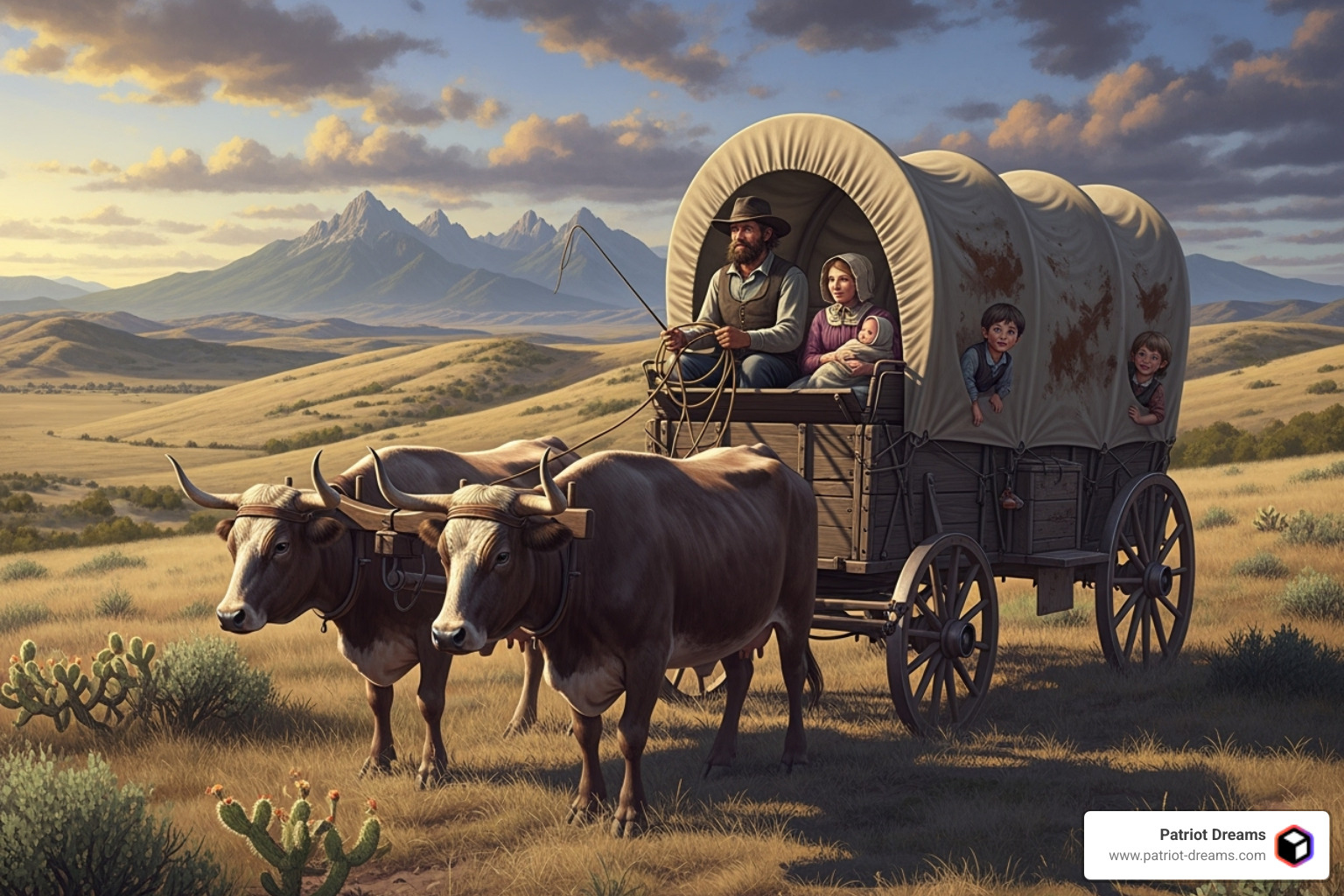A Guide to Martin Luther King Jr.'s Legacy
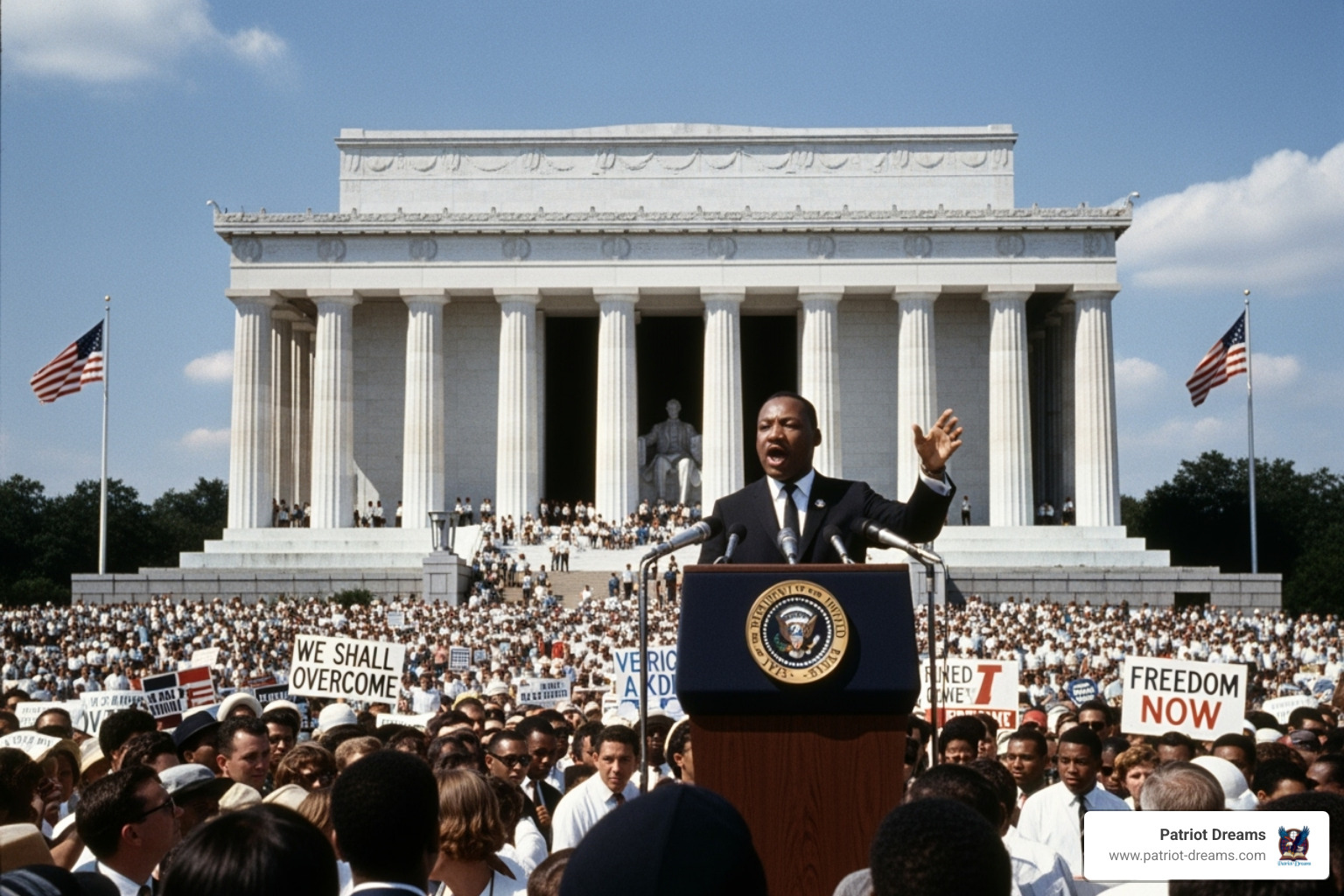

Why Martin Luther King Jr.'s Legacy Remains One of America's Most Important Stories
Martin Luther King Jr.: The Dream, The Struggle, The Legacy represents a transformative chapter in American history. His story helps us grasp how one man's vision changed a nation and continues to shape our world.
The Dream: King's vision of an America where people would be "judged by the content of their character, not the color of their skin," articulated during the 1963 March on Washington to over 250,000 people.
The Struggle: Thirteen years of relentless activism, including the Montgomery Bus Boycott, the Birmingham Campaign, and the Selma marches, all while facing FBI surveillance and violent opposition.
The Legacy: Legislative victories like the Civil Rights Act of 1964 and Voting Rights Act of 1965, and his enduring influence on global social justice movements.
A key to understanding King is recognizing he was "first and foremost a minister," not just a political leader. This spiritual foundation drove his commitment to nonviolence and his belief that "unarmed truth and unconditional love will have the final word."
King became the youngest Nobel Peace Prize winner at age 35, but his story goes beyond awards. He evolved from a local pastor to a global icon who challenged racial segregation, economic inequality, and militarism.
His assassination at age 39 revealed the physical toll of his leadership—doctors found he had "the heart of a 60-year-old." Yet his dream lived on, becoming a cornerstone of American identity.
More than 50 years after his death, King's vision remains both celebrated and misunderstood, with some sanitizing his radical message while others work to reclaim its full power.
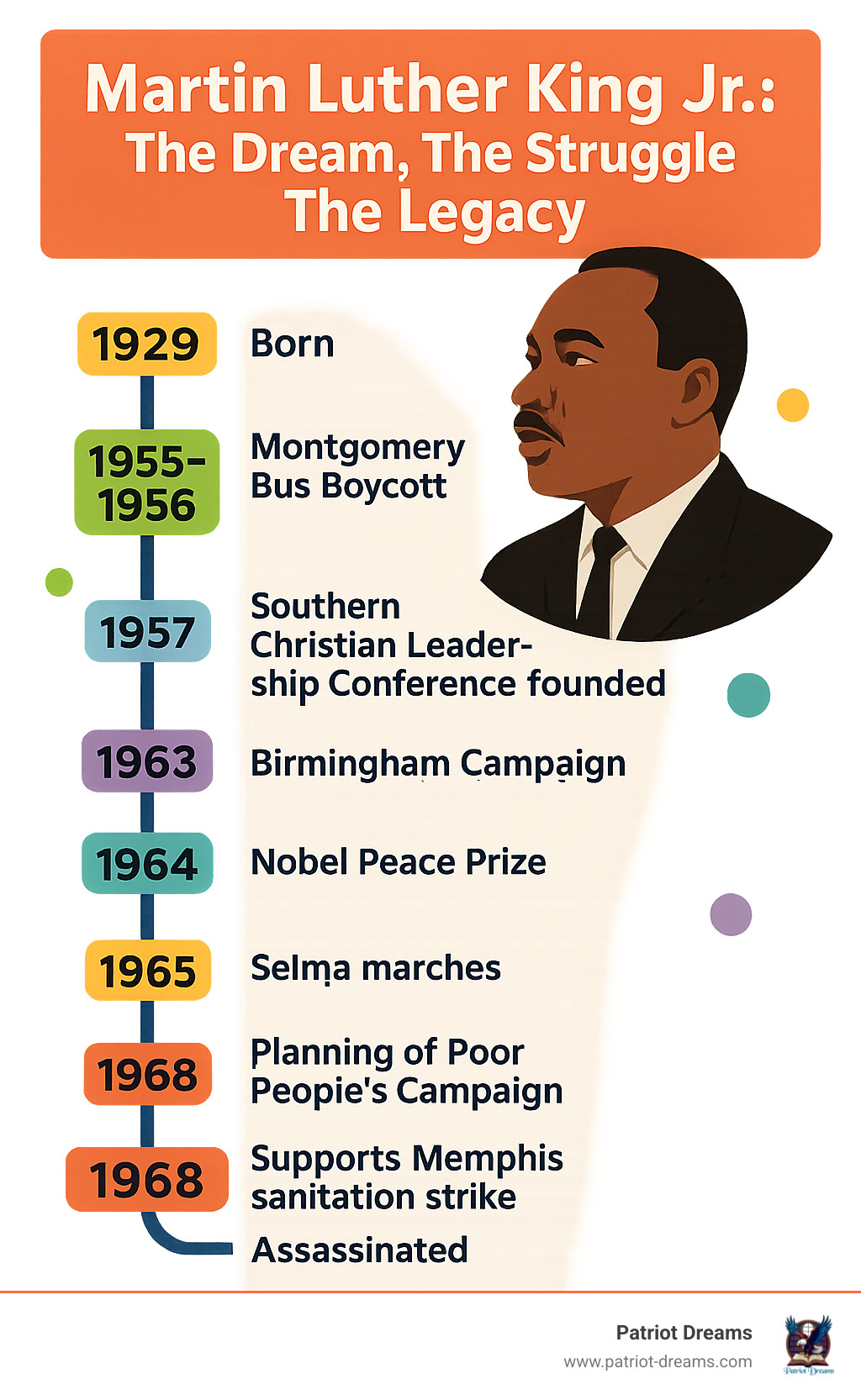
The Making of a Leader: Early Life and Guiding Philosophy
Understanding Martin Luther King Jr.'s Story starts with the man behind the movement. His journey from a boy in Atlanta to a global icon was shaped by family, faith, and a deep commitment to learning.
Born Michael King Jr. on January 15, 1929, in Atlanta, he later took the name Martin. His childhood in a middle-class neighborhood centered on education and faith.
The King family valued learning, and Martin became the third generation to graduate from Morehouse College. This academic achievement was preparation to serve his community and fight injustice.
His educational journey continued to Crozer Theological Seminary and Boston University, where he earned his doctorate. He studied Christian theology, philosophy, and ethics, broadening his understanding of how faith could transform society.
In Boston, he met Coretta Scott, a musician and activist who shared his vision. Their partnership, as documented in American Experience | Citizen King, became essential to the movement.
The Foundation of Faith
Many people miss that King wasn't a political leader who happened to be religious. As his contemporary William Gray stated, "He was first and foremost a minister." This distinction is key to understanding his approach to civil rights.
His father, Martin Luther King Sr., was a prominent Baptist minister in Atlanta who used the pulpit to challenge injustice. The Social Gospel movement taught that faith demanded action for justice in the world.
The Black church was the organizational heart of resistance, serving as a community center and meeting hall. Here, King learned that religion was a powerful tool for liberation.
This foundation gave King an unshakeable belief that God's love demanded equality for all people. It wasn't just politics; it was sacred duty.
Forging a Philosophy of Nonviolence
King's commitment to nonviolence merged his study of Gandhi's civil disobedience with his understanding of Christian love.
His nonviolence was strategic, a form of civil disobedience grounded in what he called "Agape"—unconditional love that seeks to redeem, not defeat, an oppressor.
This philosophy required discipline. King taught that suffering could be a redemptive force, exposing injustice and awakening the nation's conscience. It was about building a moral high ground through accepting violence without retaliation.
This meant training activists in nonviolent techniques: how to protect themselves, respond to abuse, and maintain dignity. Every protest had to demonstrate the movement's moral superiority through disciplined nonviolence.
Though many questioned if it could work against brutal opposition, King held firm, believing nonviolence could win not just legal victories, but the hearts and minds of America.
The Dream and The Struggle: Key Campaigns of the Civil Rights Movement
The power of Martin Luther King Jr.'s Story is clear in the specific battles he fought. These carefully planned campaigns required incredible courage, came at a heavy personal cost, and changed America forever.
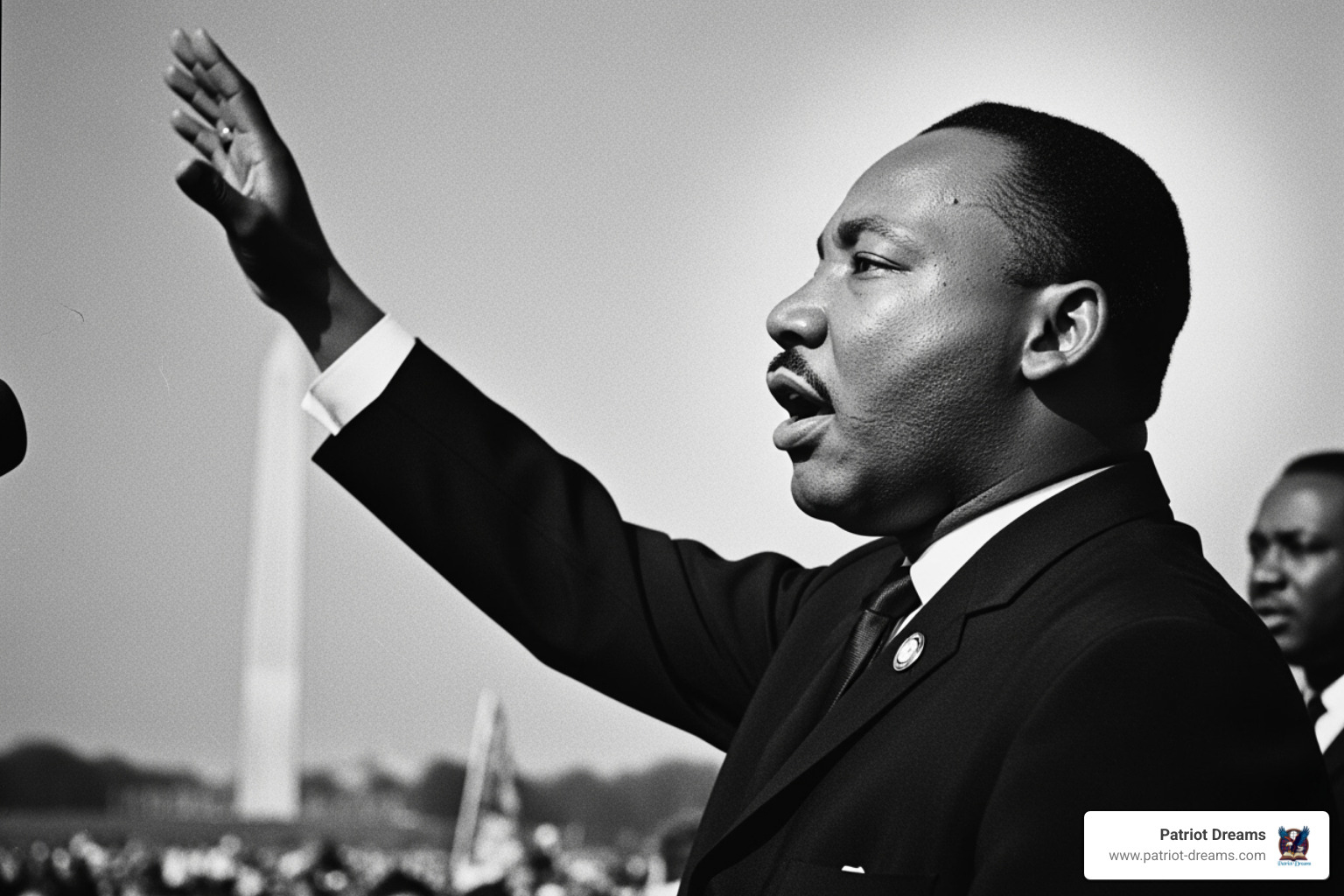
The Montgomery Bus Boycott: A Movement Begins
On December 1, 1955, Rosa Parks's arrest for refusing to give up her bus seat sparked a community-wide boycott that lasted 381 days and launched King into national leadership.
As president of the Montgomery Improvement Association, King helped organize this impressive display of unity. Thousands of Black citizens walked to work or used carpools, supporting each other through hardship. The determination of ordinary people sacrificing for justice touched the nation.
The boycott ended when the Supreme Court ruled bus segregation unconstitutional. The victory proved nonviolent resistance could work, and King, now a national leader, co-founded the Southern Christian Leadership Conference (SCLC) in 1957.
The Birmingham Campaign and the "I Have a Dream" Speech
In 1963, King and the SCLC chose Birmingham, Alabama, for "Project C" (Confrontation). The city's extreme segregation and violent police commissioner, Bull Connor, made it a strategic target.
The campaign's "Children's Crusade" involved hundreds of young people. The televised sight of children being attacked by police dogs and fire hoses horrified Americans.
Arrested during the campaign, King wrote his famous "Letter from a Birmingham Jail," a brilliant defense of civil disobedience explaining why waiting for change was no longer an option.
The momentum from Birmingham led to the March on Washington for Jobs and Freedom on August 28, 1963, where over 250,000 people heard King deliver his legendary "I Have a Dream" speech.
Using the "bad check" analogy, he said America had defaulted on its promise of freedom. He then painted a vision of an America where his children would be "judged by the content of their character, not the color of their skin."
You can read Martin Luther King Jr.'s 'I Have a Dream' speech in its entirety and explore The Lasting Legacy of Martin Luther King, Jr.'s "I Have a Dream" speech.
Facing Opposition and the Personal Toll
King's leadership came at an enormous price. FBI Director J. Edgar Hoover saw King as a threat and targeted him through the COINTELPRO program. Agents tapped his phones, bugged his rooms, and sent anonymous letters urging him to commit suicide.
Beyond government surveillance, King faced constant physical threats. In 1958, he was stabbed in the chest at a book signing, an injury so severe that a sneeze could have been fatal. His home and church were repeatedly bombed.
The constant stress took a terrible toll. When he died at 39, doctors found he had "the heart of a 60-year-old," aged by the pressure of his work and the daily death threats.
King also faced criticism from within the movement, as some younger activists accepted "Black Power" and questioned his nonviolent approach. He worked to bridge these divides while staying true to his principles.
His family also paid a price. Coretta Scott King became an activist while managing the constant fear for her husband's life, and his children grew up with the same uncertainty. Through it all, King's courage never wavered.
From Struggle to Statute: Landmark Achievements and Evolving Focus
The struggle of Martin Luther King Jr. bore fruit in the mid-1960s, as the movement grew powerful enough to reshape American law.
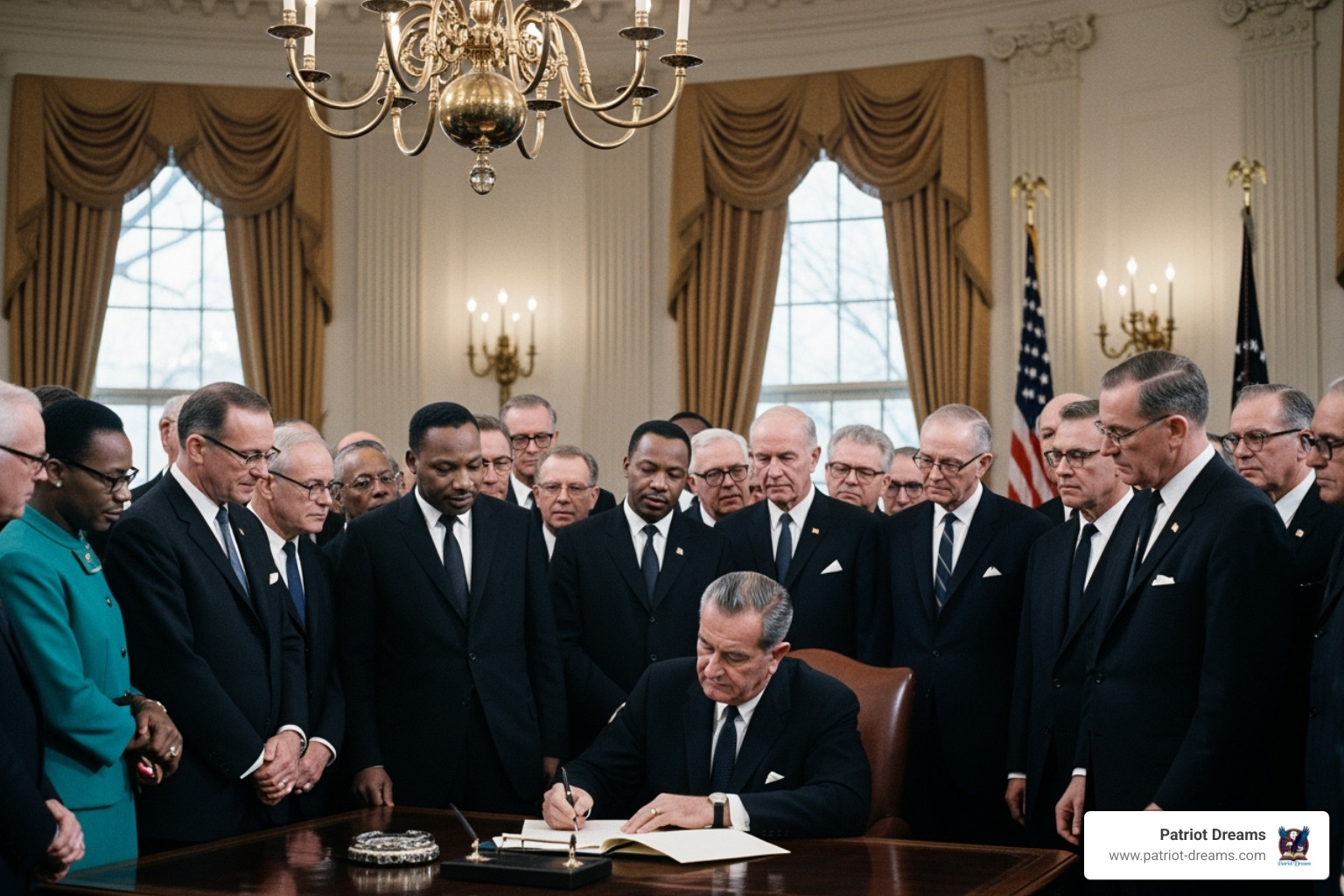
In 1964, at age 35, King became the youngest Nobel Peace Prize winner. Accepting the award, he affirmed that "unarmed truth and unconditional love will have the final word." He donated the entire $54,123 prize to the Civil Rights Movement, showing the work was bigger than any one person.
Legislative Victories for Civil Rights
The years 1964 and 1965 brought the greatest legislative victories for civil rights, the concrete results of years of protest and suffering.
The Civil Rights Act of 1964, signed with King present, was a sweeping law making discrimination based on race, color, religion, sex, or national origin illegal. It dismantled segregation in public accommodations.
However, voting rights remained a major problem, with poll taxes, literacy tests, and intimidation preventing many Black Americans from casting ballots.
The turning point was "Bloody Sunday" on March 7, 1965, in Selma, Alabama. Peaceful marchers were brutally beaten by state troopers on the Edmund Pettus Bridge, and the televised violence shocked the nation.
The national outcry led Congress to pass the Voting Rights Act of 1965. This law eliminated literacy tests and other discriminatory practices and authorized federal oversight of elections in suppressive areas. The impact was immediate, with Black voter registration in Mississippi jumping from 6.7% to 59.8% in two years.
| Feature | Civil Rights Act of 1964 | Voting Rights Act of 1965 |
|---|---|---|
| Primary Focus | Ending segregation and discrimination in public life | Eliminating barriers to voting for African Americans |
| Key Provisions | Prohibited discrimination in public accommodations and employment; outlawed discrimination in federally funded programs; established Equal Employment Opportunity Commission (EEOC) | Outlawed literacy tests and other discriminatory voting practices; authorized federal oversight of voter registration and elections in areas with a history of discrimination |
| Impact on King's Work | Addressed the "bad check" of segregation and inequality | Secured the fundamental right to vote, a cornerstone of democratic participation |
A Broader Vision: Economic Justice and Peace
After these legislative wins, King saw that legal equality was not enough. What good was the right to eat at a restaurant if one couldn't afford the meal?
His attention turned to Northern cities like Chicago, where racism was more subtle but just as real. The Chicago Freedom Movement highlighted de facto segregation in housing and employment. The 1965 Watts riots in Los Angeles underscored the problem: legal rights didn't solve the economic despair of young Black men who still lacked jobs and housing.
King then planned his most ambitious initiative: the Poor People's Campaign. It aimed to unite poor people of all races to demand economic justice and confront what he called the "triple evils" of racism, poverty, and militarism.
His focus on militarism led to his controversial 1967 "Beyond Vietnam" speech. He condemned the war as morally wrong and a drain on resources needed for social programs, declaring such a nation was "approaching spiritual death." The reaction was harsh. Newspapers attacked him, some allies distanced themselves, and President Johnson felt betrayed.
This broader vision showed the full scope of Martin Luther King Jr.: The Dream, The Struggle, The Legacy. He was becoming a voice for all who suffered from injustice, a dangerous evolution that cost him support but was, to King, the only honest path.
Martin Luther King Jr.: The Dream, The Struggle, The Legacy Today
The story of Martin Luther King Jr. didn't end with his assassination in 1968. It was a new beginning, as his vision and sacrifice took on new meaning for future generations.
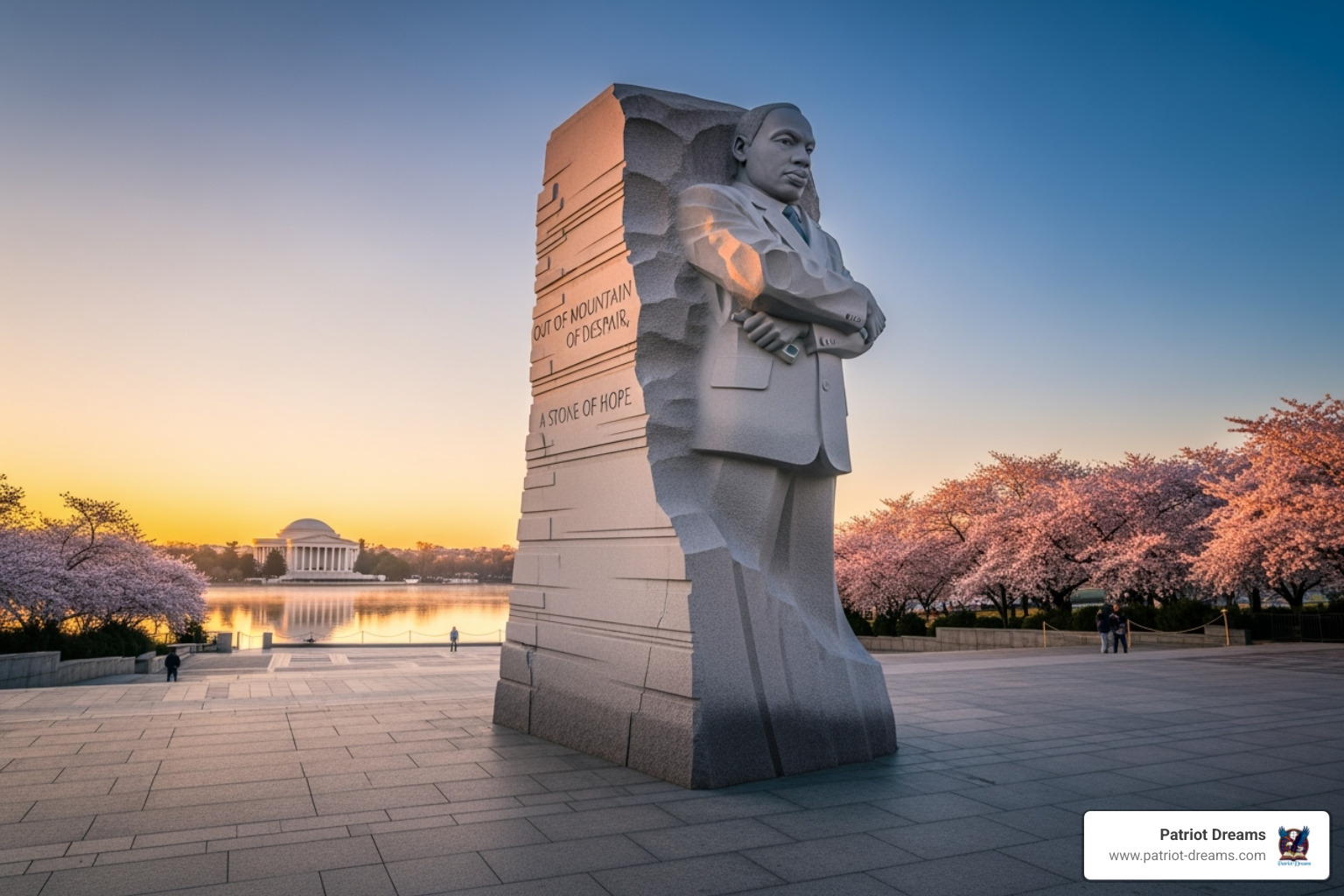
Today, his influence is widespread. The national holiday invites reflection, and his philosophy of nonviolence echoes in modern social justice movements worldwide. However, King's legacy has become a battleground of interpretation, with different groups claiming his mantle for different purposes.
Teaching the Next Generation about Martin Luther King Jr.: The Dream, The Struggle, The Legacy
How we teach King's story to young people is critical. Accurate teaching can inspire future activists, while a simplified version reduces him to a collection of quotes.
Students need to learn the realities King faced: death threats, bombings, and government surveillance. They should understand how racism shaped his childhood and how his courage was rooted in his faith.
Literature serves as a powerful bridge to understanding. Age-appropriate stories help children develop empathy and see how ordinary people can create change. Dr. King's inspirational message resonates with young people, inspiring them to consider their own potential for positive change.
Resources like the Martin Luther King Jr. | Civil Rights Leader Video from PBS LearningMedia and materials from The Teacher Store or Martin Luther King, Jr. | PBS can help.
Age-appropriate books are excellent tools. I Am Martin Luther King Jr. (Grades 1-3) and Let's Read About... Martin Luther King, Jr. (Grades K-1) introduce his story to young readers. For older students, Martin Rising (Grades 5-8) explores his final months, while Martin Luther King: The Peaceful Warrior (Grades 4-7) looks at his achievements and struggles. March On! offers a personal account of the 1963 March on Washington from his sister, Christine King Farris.
These resources help students understand that King was a real person who faced real struggles. The educational legacy of Martin Luther King Jr. continues to unfold as each new generation decides how to carry his story forward.
Frequently Asked Questions about Martin Luther King Jr.
People often have questions about Martin Luther King Jr.: The Dream, The Struggle, The Legacy. These questions help us understand the man behind the movement and why his story continues to matter today.
What was Martin Luther King Jr.'s main goal?
King's initial goal was to achieve full civil rights for African Americans through nonviolent civil disobedience. Over time, his vision expanded to include championing economic justice for all poor people and advocating for global peace. He came to see racism, economic exploitation, and militarism as interconnected evils that must be fought together, which led to his Poor People's Campaign and his opposition to the Vietnam War.
Why was the "I Have a Dream" speech so important?
The speech was a masterful articulation of the Civil Rights Movement's moral core. Delivered to over 250,000 people at the March on Washington, it presented a unifying vision of an integrated America that touched hearts across racial lines. Using powerful metaphors like the "bad check," King galvanized national support by making the struggle for justice understandable to all. It became a defining moment of the 20th century, and its eloquence continues to inspire millions.
How did Martin Luther King Jr. die?
Dr. King was assassinated on April 4, 1968, on the balcony of the Lorraine Motel in Memphis, Tennessee. He was 39 years old. He was in Memphis to support a strike by Black sanitation workers protesting poor wages and conditions, demonstrating his commitment to economic justice. His death sparked riots but also ensured his dream would inspire future generations to continue his work for human dignity.
Conclusion
Martin Luther King Jr.: The Dream, The Struggle, The Legacy is more than a history lesson; it's a living story that shapes our understanding of justice, courage, and change.
Dr. King's life shows what is possible when a dream is backed by tireless action. His dream was a blueprint for a dignified America. His struggle proved that change requires sacrifice. His legacy reminds us that the work for justice is never finished.
King's power lies in his complete story: the pastor organizing boycotts, the father fearing for his children, and the activist whose vision grew from civil rights to economic justice.
His message remains urgent, as racism, poverty, and violence persist. Modern justice movements and young activists continue to walk the path he forged.
The key lesson from Martin Luther King Jr.: The Dream, The Struggle, The Legacy is that change happens when people refuse to accept injustice. His life proves that moral courage can reshape a nation.
His story is part of the American story, shaping the values and future we build together. At Patriot Dreams, we believe stories of history inspire our present and guide our future. Explore stories of American history to see how the past shapes today.
Dr. King said, "the arc of the moral universe is long, but it bends toward justice." His life—his dream, his struggle, his legacy—shows us we all have a role in bending that arc.
Join the Patriot Dreams Community
Download the app today and start your journey through American history and personal legacy.

Explore Our Latest Insights
Dive into stories that shape our American legacy.


